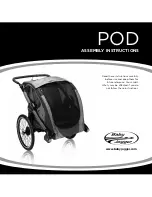
20-91 PID Anti Windup
Option:
Function:
[0]
Off
Off
[0] The integrator will continue to change value also after output has reached one of the ex-
tremes. This can afterwards cause a delay of change of the output of the controller.
[1] *
On
On
[1] The integrator will be locked if the output of the built in PID controller has reached one of
the extremes (min or max value) and therefore not able to add further change to the value of the
process parameter controlled. This allows the controller to respond more quickly when it again can
control the system.
20-93 PID Proportional Gain
Range:
Function:
0.50 N/A* [0.00 - 10.00 N/A]
If (Error x Gain) jumps with a value equal to what is set in par. 20-14
Maximum Reference/Feedb.
the PID controller will try to change the output speed
equal to what is set in par.4-13
but in practice of course limited by this setting.
The proportional band (error causing output to change from 0-100%) can be calculated by means of the formula:
(
1
Proportional
Gain
)
× (
Max
Reference
)
NB!
Always set the desired for par. 20-14
Maximum Reference/Feedb.
before setting the values for the PID controller in par. group 20-9*.
20-94 PID Integral Time
Range:
Function:
20.00 s*
[0.01 - 10000.00 s]
Over time, the integrator accumulates a contribution to the output from the PID controller as long
as there is a deviation between the Reference/Setpoint and feedback signals. The contribution is
proportional to the size of the deviation. This ensures that the deviation (error) approaches zero.
Quick response on any deviation is obtained when the integral time is set to a low value. Setting it
too low, however, may cause the control to become unstable.
The value set, is the time needed for the integrator to add the same contribution as the proportional
part for a certain deviation.
If the value is set to 10,000, the controller will act as a pure proportional controller with a P-band
based on the value set in par.20-93
. When no deviation is present, the output
from the proportional controller will be 0.
20-95 PID Differentiation Time
Range:
Function:
0.0 s*
[0.00 = Off - 10.00 s]
The differentiator monitors the rate of change of the feedback. If the feedback is changing quickly,
it will adjust the output of the PID Controller to reduce the rate of change of the feedback. Quick
PID Controller response is obtained when this value is large. However, if too large of a value is used,
the frequency converter’s output frequency may become unstable.
Differentiation time is useful in situations where extremely fast frequency converter response and
precise speed control are required. It can be difficult to adjust this for proper system control. Dif-
ferentiation time is not commonly used in water/ wastewater applications. Therefore, it is generally
best to leave this parameter at 0 or OFF.
20-96 PID Diff. Gain Limit
Range:
Function:
5.0 N/A*
[1.0 - 50.0 N/A]
The differential function of a PID Controller responds to the rate of change of the feedback. As a
result, an abrupt change in the feedback can cause the differential function to make a very large
change in the PID Controller’s output. This parameter limits the maximum effect that the PID Con-
troller’s differential function can produce. A smaller value reduces the maximum effect of the PID
Controller’s differential function.
This parameter is only active when par. 20-95
PID Differentiation Time
is not set to OFF (0 s).
VLT
®
AQUA Drive Programming Guide
2 Parameter Description
MG.20.O4.02 - VLT
®
is a registered Danfoss trademark
169
2
















































